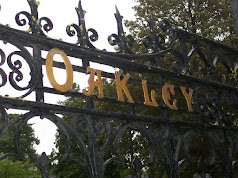Warning: Contains SPOILERS.
Having enjoyed previous sojourns around the sites of a particular story in an order similar to that in the story itself (eg. ‘The Blue Carbuncle’ & ‘The Bruce Partington-Plans’), a tour of the sites of ‘The Red-Headed League’ was a no-brainer. The fact that it is one of the few stories to have an exact date in, meant that there was only one date when such a sojourn could take place – 9th October – the date of the League’s dissolution.
I therefore made my way to Central London, and Chancery Lane Underground station, where a short walk brought me to the far end of Poppins Court. It was here, at number 7, renamed ‘Pope’s Court’ by Watson, that the headquarters of the Red Headed League were located. Jabez Wilson attended here in response to an advertisement in the Morning Chronicle meeting with a Mr. Duncan Ross, and it was also here that he attended on a daily basis 10am-2pm, copying out articles from the Encyclopaedia Britannica. However, on attending on 9th October 1890, he found the curt note ‘THE RED-HEADED LEAGUE IS DISSOLVED’.
“From north, south, east, and west every man who had a shade of red in his hair had tramped into the city to answer the advertisement. Fleet Street was choked with red-headed folk, and Pope’s Court looked like a coster’s orange barrow.” [REDH]
Having found the League dissolved, Jabez Wilson went to the landlord of the office in Pope’s Court, who knew nothing of the League, stating that the office had been rented by a William Morris, a solicitor who was using the room as a temporary convenience until his new premises were ready. However, he had stated that his new offices were ‘at 17 King Edward Street, near St. Paul’s.’ Therefore, I followed in Wilson’s steps 132 years (to the day) later, undertaking the ten minute walk to King Edward Street, passing the Old Bailey (Central Criminal Court) and finding myself (as Wilson would have) opposite the rear entrance to St. Bartholomew’s Hospital where in 1881 Holmes and Watson met for the first time. However, on attending #17, Wilson found that it was a manufactory of artificial knee-caps, and no one in it had ever heard of either Mr. William Morris or Mr. Duncan Ross. I also had some problems finding #17, taking photos of the appropriate stretch of the road.
On learning that he had been duped, Wilson’s first instinct was to attend Baker Street to seek counsel from Sherlock Holmes, who decided to visit his pawnbrokers in Saxe-Coburg Square. This was my next destination, winding my way through back streets (passing the site of the house where Charles Wesley where was converted on 21st May 1738 and where John Wesley declared 'I believe' at about 10pm on 24th May) until I reached Charterhouse Square, identified as Saxe-Coburg Square, where Wilson had left the pawnbrokers in the care of his assistant, Vincent Spaulding, whilst working for the League.
“I have a small pawnbroker’s business at Saxe-Coburg Square, near the City. It’s not a very large affair, and of late years it has not done more than just give me a living. I used to be able to keep two assistants, but now I only keep one; and I would have a job to pay him but that he is willing to come for half wages so as to learn the business.” [REDH]
Having visited the pawnbrokers, Holmes identified that it was geographically interesting, given its closeness to my final point of call, less than a two minutes’ walk away, ‘the Coburg branch of the City and Suburban Bank’. It was this Bank that Spaulding (real name John Clay) was intending to rob by digging a tunnel from Wilson’s pawnbroking shop into the bank’s vaults. Watson neatly modified the name of the bank to The City and Suburban Bank but not the purpose of the building. In 1890 this was the London and County Bank, but is now a branch of the National Westminster Bank.


The Bank is next to Barbican Underground Station, which was only one stop away from Moorgate, from which I could easily make my way home.











_1%20%20%5BPLOSH%201970%5D.JPG)
_2%20%20%5BPLOSH%201970%5D.JPG)


_2%20%5BHOUND%201978.JPG)
_1%20%5BHOUND%201978%5D.JPG)
_3%20%5BHOUND%201978.JPG)
_4%20%5BHOUND%201978.JPG)
